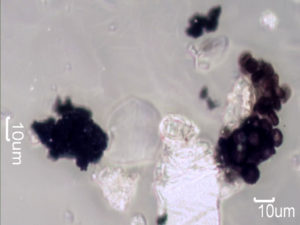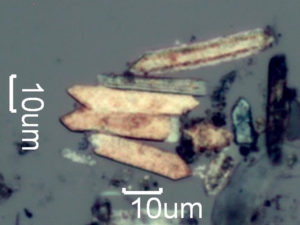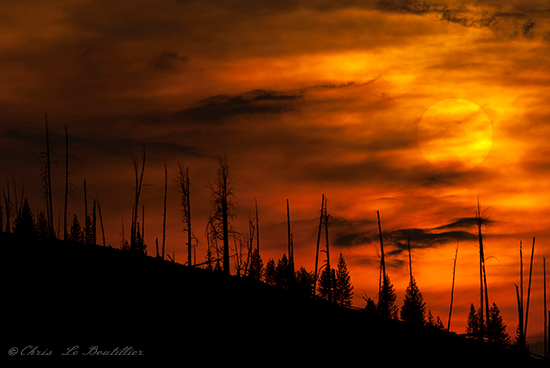Soot, Char, and Ash damage can occur to your home, office or even your local schools. Soot, Char, and Ash from a local fire can travel aloft for some distance. Very small particles can make their way into your closed up home and get deposited on all types of surfaces. Larger particles of Soot, Char, and Ash can make their way into your environment on your clothing, shoes and even your pets. These particles can have an impact on your health and could contain other particles that could be unhealthy or damaging to surfaces. If your home, office or school has been exposed to smoke from a fire you may want to have the environment tested for damaging Soot, Char, and Ash. The information below can give you some idea of the complexity of determining your exposure to particles from a fire. We have the knowledge and ability to determine what may have made its way into your environment.

This sampling was from an environmental tapelift collected from the home that was located only a few hundred meters (a little over 200 yards) away from the fire. The black area left of center in the image is showing a piece of agglomerated soot, this was produced from a large warehouse fire in a plumbing facility. The other particles also in the image are from the outside and inside of this home as well. There are large clusters of fungal spores to the right of center of the image. The translucent particle close to the center is a skin flake. The brightest large particle on the bottom-center of the image is a paper fiber from the home. The remaining black particles are agglomerated soot that was also generated from the warehouse fire.
A house fire tend to be dominated by particles of charred Douglas fir or Pine, high hydrocarbon content soot agglomerates from burning plastics and synthetic fibers, charred paint, and soot coated glass fiber. Agglomerated soot tends to be lacking in fireplace emissions, field burning, wildfires and the backyard fires of plant trimmings and leaves. The burning any waste materials in the fireplace will add to the complexity of the emissions but will not add phytoliths or burnt clay.

Pyrolized calcium oxalate phytoliths are a marker for wildfire smoke, or any industrial, commercial, or other activity that involves the burning of plant materials. Pyrolized calcium oxalate phytoliths have been used to identify homes that have been impacted by wildfires, businesses impacted by emissions of restaurants, towns impacted by slash burns, Teepee burners, hog-fuel boilers, etc. The predictable chemical changes that take place as a result of short exposure to high temperatures often result in a particle with characteristic optical properties and a shape reminiscent of the original phytolith.
As you can see, there are ways to determine the source and degree of exposure to soot, char, and ash from uncontrolled fires. By obtaining tapelift samples from your environment, we could determine the source of the soot, char, and ash and the extent of your exposure.
If you have any questions or would like to have soot, char, and ash damage testing done please contact us.
- Soot, Char, and Ash Damage
- Wildfire Smoke Soot Damage
- Black Dust
- Why Tapelift Samples?
- Particles and Health
Contact | Privacy | Terms of Use
Copyright © 1978-2022 Microlab Northwest™/MicrolabNW™ All Rights Reserved.
All Information and images contained within may not be copied or reproduced without written permission of MicrolabNW. Some information contained herein has been obtained from sources deemed reliable but not guaranteed.

